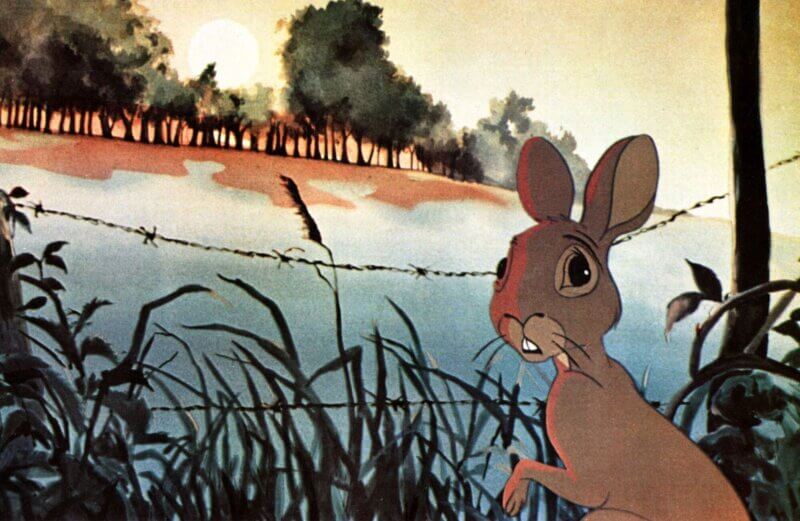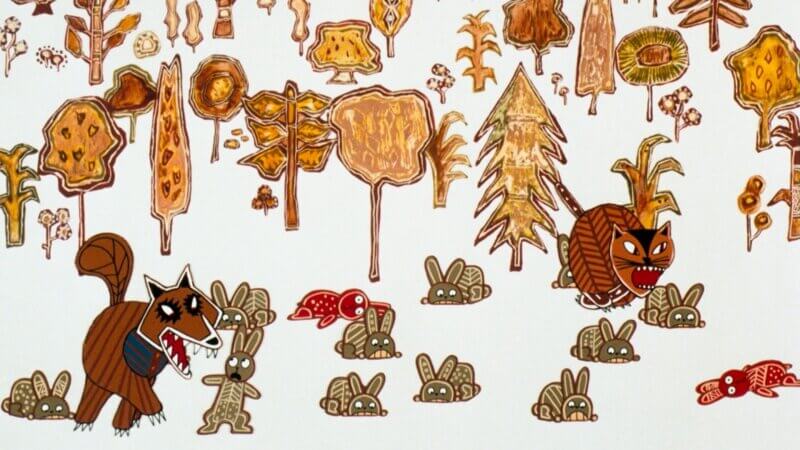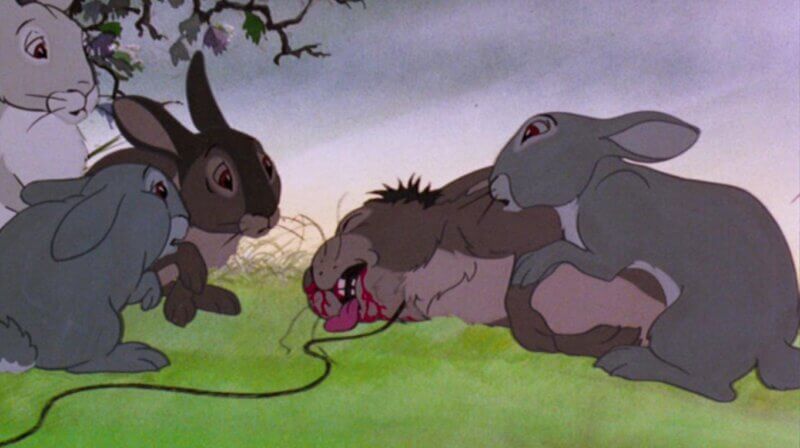Sapphire in Bright Eyes: 45 Years of Watership Down’s Artistic Acclaim and Controversies
The 19th of October in 1978 would mark a special day for British animation as the adaptation of Richard Adams’ acclaimed debut novel, Watership Down, would make its world premiere at the Empire Cinema at Leicester Square in London. Released a year after Disney introduced audiences to the likes of Pete’s Dragon and The Rescuers and following in the footsteps of ambitious and experimental animated films such as The Lord of the Rings, cinemagoers were certainly in for a surprise as they saw a group of rabbits on a dangerous adventure across the countryside as they try to find a new warren for themselves after escaping the destruction of the hill by humans they once resided on.
Spanning the decades, the film’s popularity and recognition within British animation has only grown as it received various re-releases with the emergence of the home video market and is still often cited in a plethora of listed articles dedicated to being one of the best-animated films of all time. Despite the recognition of its title, the television series that aired on CITV between 1999 to 2001 and the mini-series produced by the BBC and Netflix in 2018 couldn’t quite make the same impact as the theatrical Watership Down made all those years ago for its graphic violence for a U certificate and mature storytelling of life and death from the perspective of adorable bouncing bunnies.
Looking through the 45-year anniversary of the celebrated film, as well as looking back at its extraordinary history and the controversies that came to light afterwards, we will also be exploring some of the talented artists from around the world who joined this unique animation production and how they each used their craft and skillset to make a haunting, yet beautiful, piece of animation.
First published in November 1972, Richard Adams’ debut novel, Watership Down, became a major success for him, having earned him numerous prestigious publication awards. His story of a group of rabbits and their harrowing journey to find a new home for themselves captured the imagination of its readers, having received positive reviews from critics at the time and nearly becoming a UK best seller. With so many eyes and attention on this early success for an emerging writer, someone saw the potential to adapt the pages into a feature-length film.
Martin Rosen was known as a film producer in the late 1960s, having worked on several productions around the world, with A Great Big Thing and Women in Love being his most notable works at the time. Picking up a copy of the book, Rosen decided to enter the world of animation to bring Adams’ book to life.
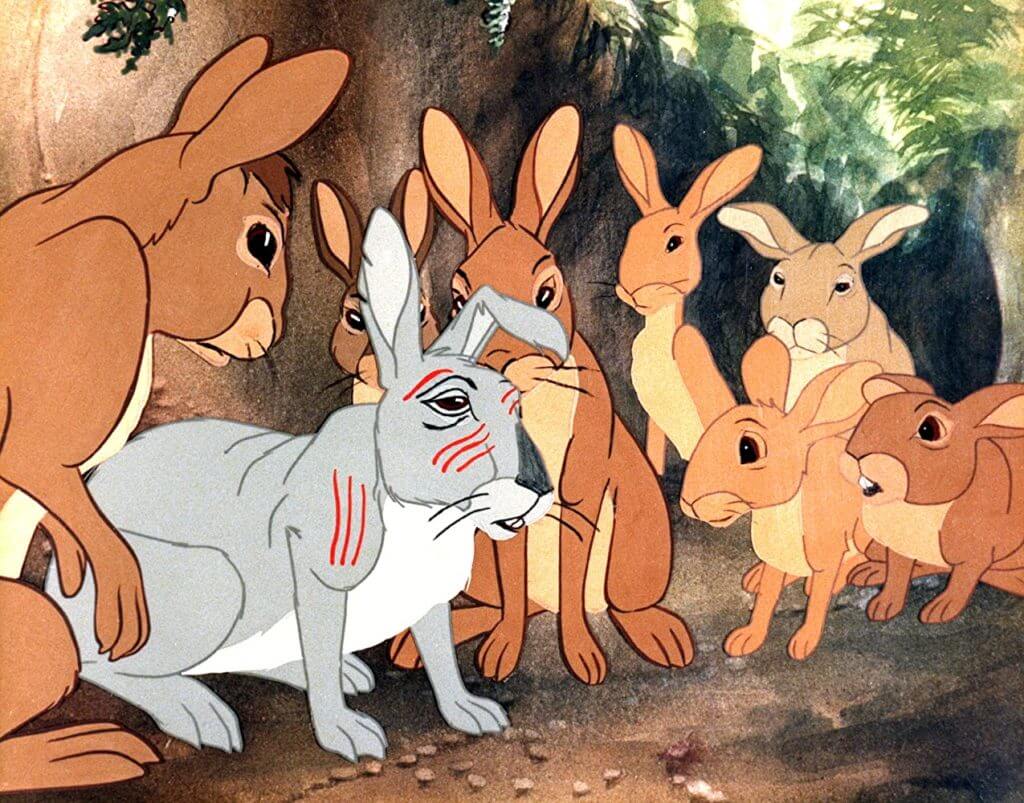
Still from 1978’s Watership Down (Credit: Nepenthe Productions)
After getting the rights to make the film, production began in 1975 and in order to create the film, Rosen set up an animation studio named Nepenthe Productions near Warren Street in London and hired animators from around the world, some of whom had impressive portfolios under their belts. Among them were British animator Arthur Humberstone, a senior animator who previously worked on Animal Farm and The Yellow Submarine, and American animator Phil Duncan, who worked on the experimental feature Everybody Rides the Carousel.
The man who was originally hired as the director and who spent approximately a year on the film’s production was John Hubley, one of the founders of United Productions of America in 1941. Hubley and UPA helped to revolutionise animation by opting to use modern designs with hand-drawn animation, which helped to bring classic characters like Mr. Magoo to life and direct a number of Academy Award-winning short films in the process. But unfortunately for the talented American animator, his time in the director’s chair was short-lived.
Working on the designs and ways to incorporate them into the themes and ideas from the script, Rosen eventually fired Hubley after discovering that he was working with ABC as well for the adaptation of the Doonesbury comic strip. But despite being let go and having the freedom to work on this new production, Hubley died soon after during heart surgery, making Watership Down his last project.
Those familiar with his work and the film might recognise his talents with the prologue, which tells the origin of the animals and how rabbits came to be in the world. Production designer Luciana Arrighi stepped in to complete the beautiful opening sequence that Hubley started, using the inspiration from Aboriginal art to complete this unique and iconic scene.
Martin Rosen certainly had plenty of challenges to get the film completed and released for British cinemas. As well as stepping into the director’s chair, he also had to raise finances for the production of the film from an international conglomerate of investors, raising a total of £2,000,000 to get the film made with a talented crew and an established cast to provide the voices. Despite securing a large sum of money, Rosen had to gather even more to pay for the publicity of the film despite securing distribution from Cinema International Corporation. Managing to overcome the financial hurdles, the film finally had its world premiere at the Empire Cinema at Leicester Square in London on the 19th of October in 1978.
Some critics at the time of its release couldn’t accept the designs of more realistic animals to tell its story compared to the films that Disney was producing with the likes of The Rescuers and Pete’s Dragon the year prior being more pleasing to their eyes. However, it also received positive reviews as well and other critics enjoyed its fresh look and more mature storytelling. This was far from its only controversy as audiences expressed concerns over the U certificate it received from the BBFC as it featured plenty of scenes with violence and torture throughout that was only changed to a PG certificate as early as 2023 to reflect its graphic content despite decades of letters and complaints from families.
However, it managed to hop and bounce among its competitors in the late 1970s and beyond. With its U certification and praise from some reviewers in numerous publications, it reached number 6 in the UK box office in 1979. It has only grown into popular culture over the years, with Mike Batt’s song from the film’s soundtrack, Bright Eyes (performed by Art Garfunkel), being a global chart-topper and the film being re-released on VHS in 1987 and broadcast on television channels for re-discoverability, new generations of audiences have been both enchanted and horrified by the work that the animators put into it.
While those involved in the production would have continued to enjoy celebrated careers, Martin Rosen would follow up his success with the film as an executive producer on future adaptations of the source material, directing the controversial and grim animated film The Plague Dogs, and doing a series of interviews on his directorial debut. However, a large public case in 2020 might very well have ended his successful career in the film and television industries as a whole.
When he originally wrote the contract for the rights to a film adaptation of Watership Down, Rosen wrongfully claimed the rights to the book. He entered contracts worth between £400,000 and £69,000,000, with the latter coming from an audiobook deal. Rosen even failed to pay Richard Adams’ family any fees or merchandising royalties from the BBC and Netflix mini-series that he executive produced in 2018.
After hearing both sides of the case and the evidence presented, the judge granted the Adams estate the rights to the late author’s first novel and terminated the original contract that Rosen penned all those years ago. While this may not impact those who cherish the original film nor his animated follow-up, The Plague Dogs, how this would impact his career remains to be seen.
Despite Martin Rosen’s controversy surrounding the beloved film, the team of animators and key crew members who worked for him should be fondly remembered as much as the classic film that impacted a whole generation of cinemagoers. But more than that, it should be celebrated as their impact on the animation industry and a piece of their legacy that has continued to be enjoyed by film enthusiasts and will certainly continue to do so for decades to come.
Arthur Humberstone would continue to work on British animated films and television shows that have stood the test of time and became childhood favourites for those who grew up in the 1980s with The BFG and Super Ted remaining to be some of his finest pieces of work. Luciana Arrighi may not have resumed her work in animation, but she did become a recognisable name in production design in many films, including Sense and Sensibility (1995), Being Julia, and Mrs. Harris Goes to Paris.
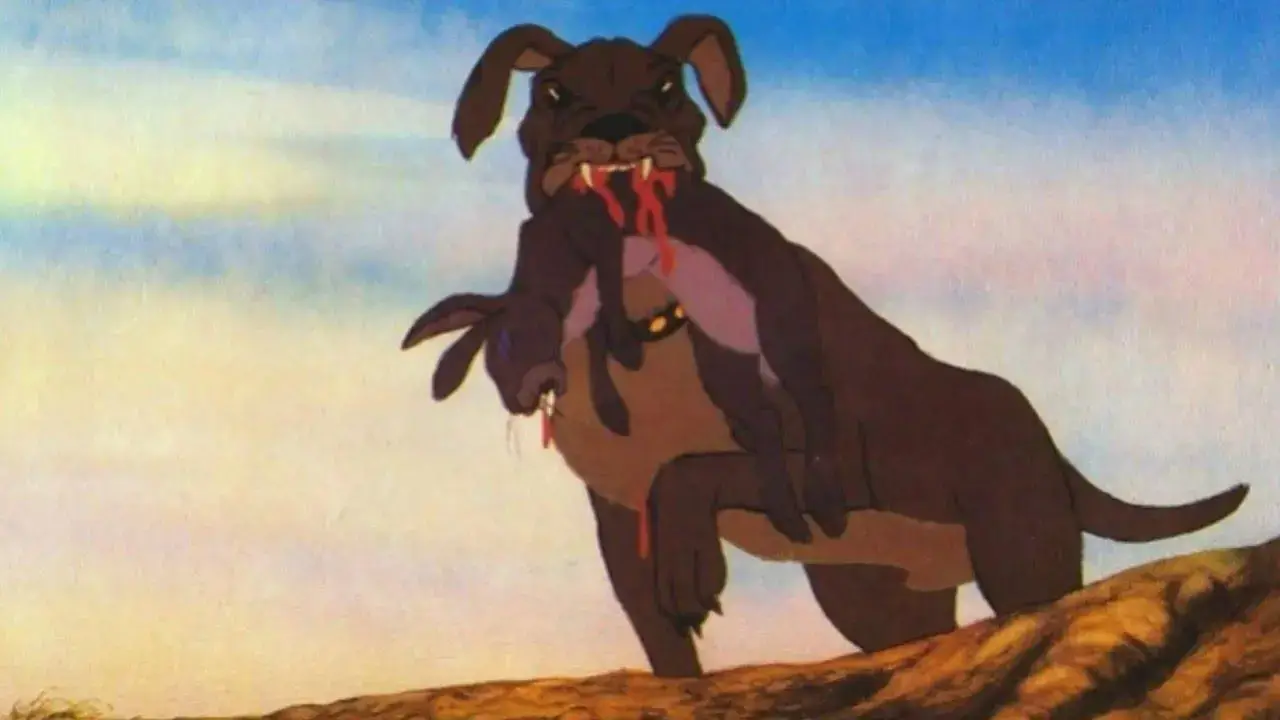
Still from 1978’s Watership Down (Credit: Nepenthe Productions)
As for the American animators John Hubley and Phil Duncan, they have been remembered fondly for their contribution to American animation as much as for their artistry in bringing the rabbits to life. While Phil’s later work may not have lived up to be as successful nor fondly remembered compared to Watership Down, his earlier work with Disney has stood the test of time as not only did he work on a plethora of their earlier short films, but was also an animator on their beloved features such as Bambi and Cinderella. While John, unfortunately, met a tragic and early end, he has had a lasting legacy of being one of the key figures of the industry in America who is still celebrated and remembered to this day.
Whether you have seen the film before or not, there’s no denying its artistic and story-telling merits that have made it one of the most beloved and cherished British animated films of all time. It may have endured plenty of controversies, but it’s a piece of animation history that deserves to be celebrated and will hopefully be remembered for many more years to come.


